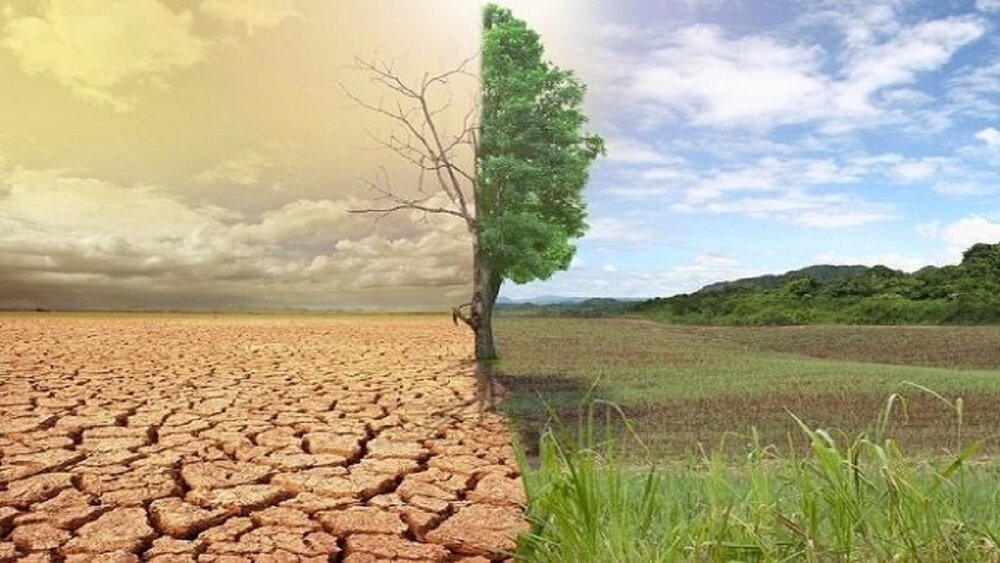Plan on desertification mitigation drawn up for West Asia

TEHRAN – Part of the desertification mitigation program for West Asia is prepared to be implemented by the countries of the region, Ali Mohammad Tahmasebi, head of the national working group for mitigating SDSs, has said.
In a meeting on Thursday in Tehran, Seyed Hossein Mousavifar, head of the international affairs and conventions office of the Department of Environment, met Shafiq Dayoub, the Syrian ambassador to Tehran.
The officials discussed the need to strengthen future cooperation, especially on environmental issues.
Iran has a 70-year history of dealing with desertification and dust control, with about 5 million hectares of planted forests in sand and dust storm hotspots, especially in areas with less than 50 mm of rainfall, Tahmasebi said.
Part of the program is called the West Asia Action Plan. The first phase begins with countries of the region and other countries of the Persian Gulf will be later joining the action plan. Studies by international organizations show that the Islamic Republic has recorded the highest number of reforested desert areas after China, he added.
Iran is surrounded by 8 large SDS hotspots stretching to 270 million hectares in neighboring and Persian Gulf countries, he said.
In fact, the dust is raised from Turkmenistan, Uzbekistan, Afghanistan, and Pakistan in the northeast as well as Iraq, Syria, Saudi Arabia, and Jordan in the south, southwest, and west.
Part of our desertification mitigation program is called the West Asia Action Plan, and we demand that the first phase begins with the countries of the region and the other countries of the Persian Gulf later joining the action plan, he explained.
Dayoub also for his part said that the relations between the two nations are strategically close and strong, but a gap is felt in the fields of the environment, economy, and trade, which needs to be considered seriously and special measures should be taken to strengthen these fields of cooperation.
He further expressed readiness to cooperate effectively to expand relations between the two countries in all areas, including the environmental issue, mainly ecosystem and climate change.
SDSs phenomenon
The SDSs phenomenon is no longer an uninvited guest because it has been plaguing the country for several years and has caused problems in many provinces. According to experts, natural and human factors are involved in the occurrence and severity of this phenomenon which is mainly caused by excessive consumption of water and drying up reservoirs.
The internal dust sources are estimated at 34.6 million hectares, generating an average amount of 4.22 million tons of dust per year, about 1.460 million hectares are dried wetlands.
Some 4.23 million tons of dust are raised per year, which means the loss of soil fertility will hit the agricultural sector.
Recently, a dense mass of sand and dust storms entered Iran from Iraq and affected the western and central provinces, and eventually hit 25 provinces, including Tehran, Alborz, Kermanshah, Ilam, Zanjan, and Kordestan, causing the air pollution index of Tehran to reach a very dangerous scale.
Dariush Gol Alizadeh, Head of Iran's National Climate Change Office (NCCO) of the Department of Environment, told IRNA that the hotspots of the dust have been haunting the country in the past few days in eastern Syria, western Iraq, as well as Jordan, and Saudi Arabia.
These dust sources have appeared many years ago, and due to the drought and water shortages that have occurred in recent years, they have both intensified and increased in number. In fact, abandoned agricultural lands in those countries are a source of SDSs, he explained.
If serious action is not taken in the form of diplomacy and international institutions do not comply with the requirements to eradicate SDSs, the countries will always be haunted by the phenomenon, he lamented.
SDS not only affects people’s health but also has a psychological effect, it also has a great negative effect on agricultural products, and on the reproduction of plant species and activities such as beekeeping, he further noted.
At present, this phenomenon cannot be dealt with, but the damage can be minimized, he said, adding, programs to be carried out in this regard can be planting crops, shrubs, and finally soil stabilization by biological mulches.
FB/MG
